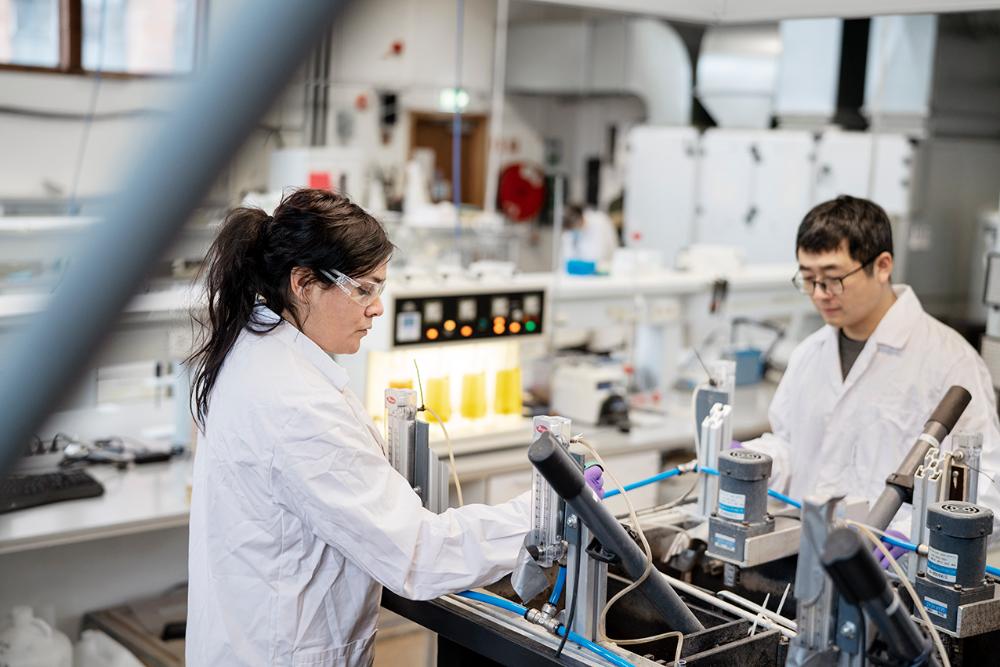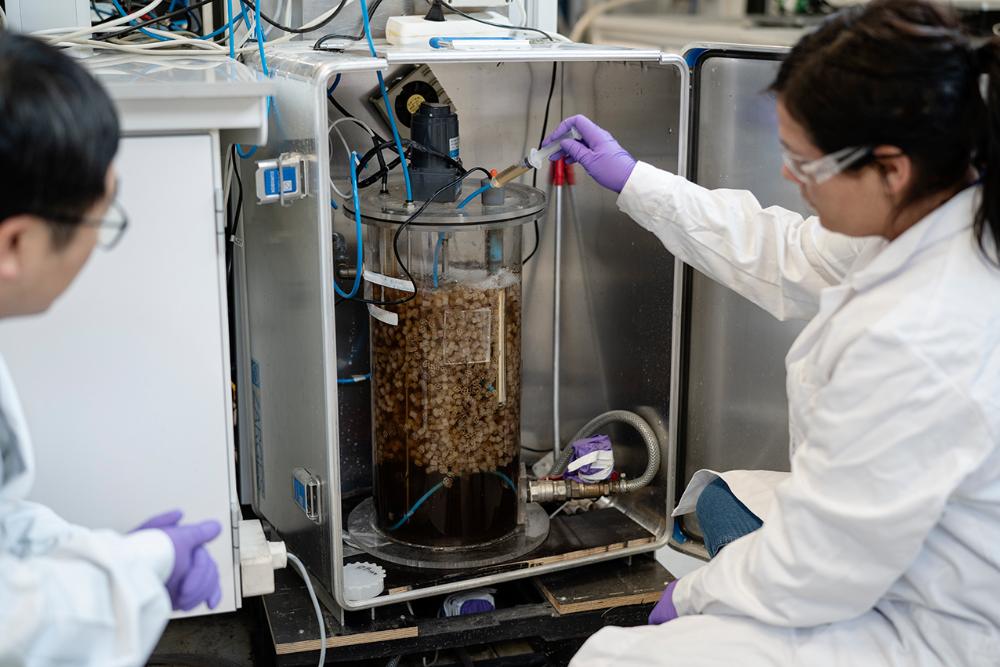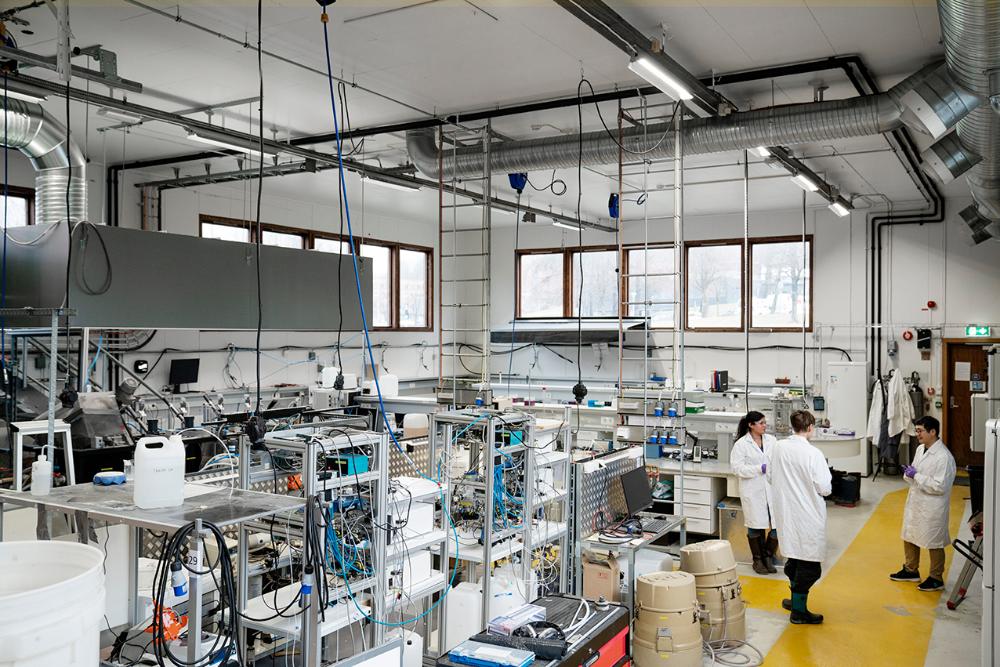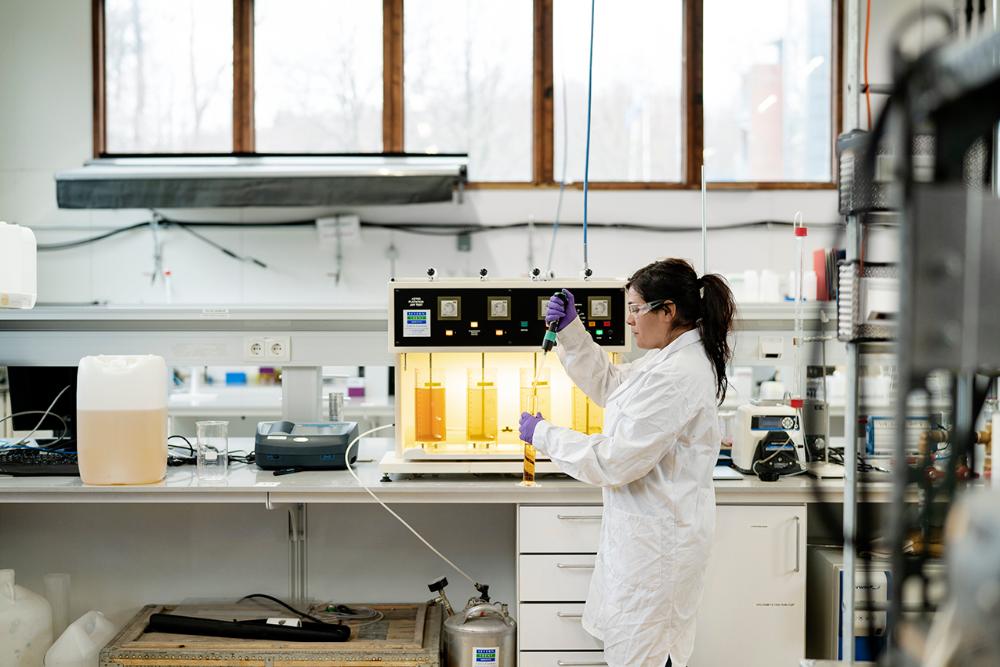IBM - laboratories - Waste water lab
Wastewater laboratory

Blanca M. Gonzalez Silva and Zhitao Huang are collecting sampling from wastewater treatment plant. Photo: Lars Erik Berg
The wastewater laboratory is a research and education lab providing infrastructure for experimental research focusing on municipal wastewater treatment, sludge treatment and resource recovery. The laboratory is equipped with several types of pilots and reactors with different wastewater treatment technologies such as activated sludge, moving bed biofilm reactor (MBBR), and sequence batch reactors (SBR).
The wastewater laboratory facilitates MSc, PhD, postdocs and researchers with experiments applied to wastewater treatment by different physical, chemical and microbial processes such as:
• Membrane filtration
• Struvite crystallization
• Enhanced biological phosphorus removal (EBPR)
• Nitrification
• Denitrification
• Partial nitrification/Anammox process (PNA),
Several wastewater parameters can be analyzed, such as Total and suspended solids, Biochemical Oxygen Demand (BOD), Chemical Oxygen Demand (COD), Phosphorus, Ammonium, Nitrate, Conductivity, pH, dissolved oxygen, etc.
Enhanced Biological Phosphorus Removal

Wastewater sampling of an Enhanced Biological Phosphorus Removal (EBPR) in sequencing batch MBBR. Photo: Lars Erik Berg.
Panaromic view of waste water lab

Experiment of coagulation and flocculation

Experiment of coagulation and flocculation of waste water. Photo: Lars Erik Berg
